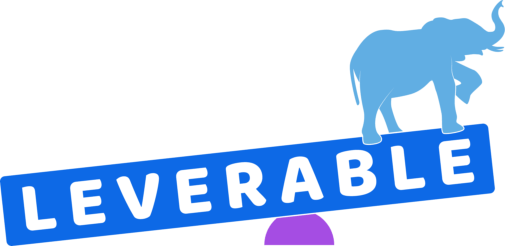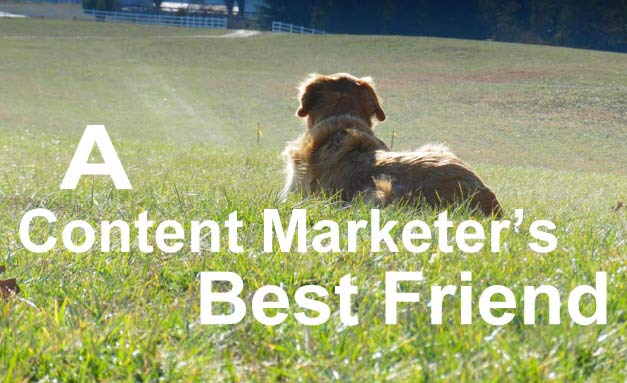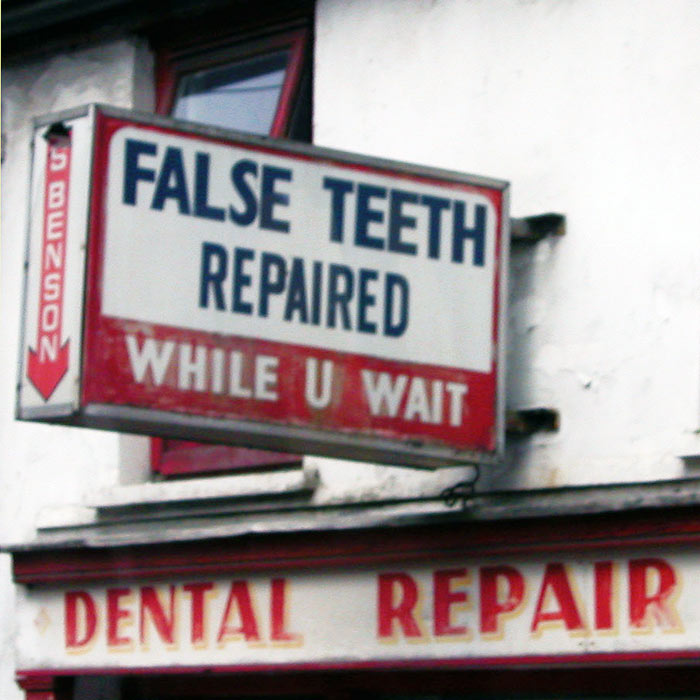While the SEO community laments the good ol’ days of easy link building, the new era of Google search results is undoubtedly better for the user experience. Yes, link building has gotten significantly harder, but this is actually a good thing if you look at the big picture.
Look at any SEO blog and you’ll probably find an article with a distinctly unoriginal title like “Link Building is Dead.” For one, I can’t believe the total lack of creativity that SEO bloggers have used to address the subject. Two, link building is certainly not dead – not even close. If Google could make links go away, they would, but they still need to use links when calculating quality. But we link builders need to change our approach.
Ask yourself one single question: what does the target audience want? The question is simple in theory, but elusive in practice.
I’ll let you in on a secret – your target audience doesn’t want to sift through a directory of 200 members to find your site. They also don’t want to see a shameless plug on a page that’s filled with user-generated content. These sites are unprofessional and rarely benefit the average user.
Instead, links now have to be earned. In order to gain a link, you need to create an informative, share-worthy online resource that will actually get people in your industry talking. This means that anything from videos to blog posts to infographics can satisfy this demand for high-quality online information.
Content Is Beautiful
The beauty of great content is that it shares itself. Once you create a excellent piece of content, people in your online niche can interact with it, and interaction is what fuels link creation. People you probably don’t even know begin sharing it on social media and posting it on their own websites because it provides their visitors with premium online content that boosts the overall experience.
When link opportunities fall into your lap rather than you having to search for them, you know you’ve created an extraordinary piece of content. “Natural backlinks” the term we’ll use to describe an inbound link that comes from a random website you didn’t have any previous contact with.
With link earning, you don’t focus on where to land an inbound link. You focus on creating the best possible content. Doing that gives you the ability to get links naturally.
How Does Content Marketing Fit In?
The SEO community is going through a monumental change as businesses are ditching the term “SEO” and calling themselves content marketers. This young industry may be the new face of online marketing as Google continues to reward businesses that generate digital resources that connect with visitors.
Here are the basics: online content marketers create just that, online content in the form of blog posts, case studies, white papers and mostly text-based resources. Some will go even further to create videos, infographics, or interactive applications to build up online hype around their client.
The underlying point of content marketing is to attract, pull, or drive potential customers inbound to your content so that you can start the process of solving a problem they have. Ideally, a number of these visitors will be engaged enough to link to your content. Congratulations, you’ve earned it and you deserve it (in Google’s algorithmic mind).
Earned inbound links help you perform better in search results than competitors who expend all their resources looking for places “where” they can get a link. Of course, there are a number of other reasons that content marketing works. It helps build the reputation of the brand and create an online following that relies on your site for information.
The problem is that producing great content is hard. The Internet is littered with “Top 10 Lists” and “How To Guides” that simply rehash the same information. I’m not saying that these lists are necessarily bad; it’s probably just going to be a lot harder to stimulate interest when these kinds of posts offer little in originality.
The “Spectrum of Quality”
Matt Cutts, the head of Google’s Web Spam Team, uses the term “spectrum of quality” to refer to the relative value of online content. There are things at the bottom, like blog posts with duplicate content, and there are things at the top, like heavily researched articles with detailed analysis and complementary pictures and video.
It’s not the Google Web Team that decides if your content falls into the upper echelon of this “spectrum of quality.” It’s the online community that decides which content they like and which they don’t. Google’s algorithm is simply becoming better at distinguishing the former from the latter.
As we all know, the “online community” is not a single entity, but instead an endlessly divisible collection of users that prefer different kinds of content. Judging the quality of content is subjective. That’s fine. A great piece of content can fail on some sites and create fans (and links) on others.
Tell Me How to Create Great Content
Everyone has their own practices for content creation. Some bloggers simply sit down and write from their heart’s inspiration, click “Publish” and go to bed. Brands tend to think more strategically about content. Executing a successful content marketing campaign requires a process for creating, publishing and promoting great content. For the more aggressive, it may involve things like split testing titles and mining company data to target specific buyer personas.
Here’s one way.
Seize the Audience
As we pointed out earlier, this is the single most important question when drafting online content because if you know what users want, then it’s easy to fill that void. Consider:
How technical does the writing need to be? As a rule of thumb, a B2B business generally requires more technical writing than a B2C business that needs to address the general public.
Who are the big players in the industry? Research the kind of online content that people in the niche already like. Stick to a similar stylistic formula but offer something new and exciting that no one else is doing.
After understanding the characteristics and preferences of your audience, you should get acquainted with the group of online users that you’re targeting.
But, what exactly should you tell them?
Great Content Starts with a Great Idea
Coming up with a great idea is the longest part of content generation because you find yourself going to back the drawing board dozens of times to brainstorm before you create a piece of content that actually generates a buzz. Content marketers call this phase “ideation.” There’s no formula for coming up with a great idea, but I’ll provide one of my favorite examples.
In 2009, furniture retailer IKEA published Facebook photos of new showrooms. If you were the first to tag your name on an item in the picture, IKEA would send you that item for free. Great idea? Of course it is. With only a few Facebook pictures and product giveaways, IKEA was becoming one of the most talked-about sites of the year, receiving inbound links galore from excited participants.
Earlier I pointed out that content marketing can take many different forms like pictures, videos, infographics, articles, and all kinds of online resources. How do you translate a great idea (above) into an actual piece of shareable content?
Making It Happen
Let’s imagine that we’re working with a hypothetical client in the auto services industry. A good portion of this company’s revenue comes from oil changes, so our idea is to create online content that shows users the effects of skipping periodic oil changes.
So, how can we convey this information? Well, we can write an article, but that’s not very interesting and it’s been done thousands of times. What about an article with corresponding videos? This is definitely better and will certainly provide a bigger payoff in terms of rankings.
Now let’s go above and beyond. Imagine a nice page, with our client’s logo, that is an interactive guide to your car’s engine. There are pull-down menus to show how sludge builds up after 4000 miles, 5000 miles, and eventually 8000 miles. And you can click on different components within the engine to see how this sludge affects the car’s performance.
This is Grade A online content. It is a clever blend of excellent writing, interaction, and readability that culminate in a satisfying user experience. If you can pull it off, this is the type of link that influencers will share, industry enthusiasts will post on their own sites, and average consumers will send via social media. As far as my search queries go, an “interactive oil change guide” is yet to exist, so if you’re an auto repair shop, have at it!
This hypothetical client is a great example of what online content can be. In the short-term, this will to be difficult to research, design, and program – it requires a lot of extra work that most competitors simply aren’t willing to put in. In the long run though, this is the kind of link that users will enjoy and Google will see as a huge win.
Of course, there are tons of other options for your online content. In this case, an interactive guide seems like a perfect fit for our audience and our idea, but other times, you interests might be best served with a PDF, brochure, video series, chart, infographic, comic strips, you name it. It’s all about finding the best way to convey your expertise in an attractive way to your audience.
When it comes time to turning your idea into tangible content, there are a few rules of thumb you should follow:
Length is good. In general, the longer the content the better. This is for a few reasons:
- You can cast a broader net with more search terms, keywords, and in-depth information
- It requires more in-depth, professional research that informed consumers crave
- Longer content is more shareable. Research shows that most shared articles are 1500+ words (very rarely are 250 word blog posts worth a share).
Be strikingly different. Whatever medium you do use for the content, offer an exciting and stimulating take on the subject matter. Purely unique content will face less ranking competition and will generate more online excitement.
Organization is key. Choose if the information is best organized in a question-and-answer format, small blurbs with pictures, or other visual style. Adding extra interactive or visual elements is always a nice touch.
At this point in the process, you finally have a finished product that’s ready to be posted online, but where and how do you share it?
Publishing and Promoting It
The most obvious place to publish content is your own site. You probably already have a page dedicated to blog posts or a separate “resources” page, which are both the fastest and easiest ways to get your content up quick. The only problem is that unless you have a substantial number of monthly visitors, then it might be hard to generate the buzz that will lead to natural backlinks (a term we defined earlier).
If you want even more exposure, then shopping your content around to big names in the industry might be also good idea, but it’s extremely difficult to find someone that’s on board. Essentially, this is just “guest blogging,” but if you do it right, then it could look like your content came from an “expert columnist.” That’s the kind of reputation we’re shooting for.
Industry blogs and editorials receive tons of emails from people just like you saying, “I’m a great writer and I have content that would perfect for your readers!” Unfortunately, this isn’t going to cut it 99% of the time. There are several things that can boost your chances of publishing content on another site:
Develop relationships first. Editors will give submission opportunities only to people that are known contributors or leaders in the industry. Comment on articles. Make phone calls. Send emails. It could take months to make a name for yourself, but you need to become a recognized voice in whatever the industry. Only after you have a strong reputation within the online community should you reach out to editors and webmasters about getting your content published.
Send them sample content. Never send an email that says, “I have great content, but I can’t show you what it is yet.” Offer them a sample of writing, a screenshot, or other evidence that shows you’re serious and prepared to submit your work.
Place the backlink in an unobtrusive place. All of this comes down to securing an inbound link to your site, but you want to do this without making it look like a blatant advertisement. Don’t overload the content with backlinks and use it as a supplement to the material. The “author bio” is a common place to find backlinks that don’t detract from the actual content.
Only pick one. Once you have a site that’s willing to publish your content, do NOT continue to promote the content elsewhere. Publishing duplicate or even similar content on separate sites is an easy way to get it filtered out of the Google index.
The greater your content is, the easier it will be to promote. And the better the reception will be. Did it work? If so, congrats, you’ve just “amplified” your content as content marketers like to say.
Post-Publication
After the content is published, you want to ensure that it will be fresh for longer than just the immediate future, but hopefully years down the road. There are a few rules of thumb for keeping the community engaged with the content long after it’s been published:
Promote it with social media. After the publication of your content, immediately spread the word to your online followers. Use Google Plus, Facebook, Twitter, or any other social network to tell your readers about new content that was posted.
Make it evergreen. Does the content have an expiration date? An article called “The Top Industry Trends of 2015” will be obsolete in less than a year. Edit page titles and descriptions to ensure that the content will provide years of quality viewership to your users.
Change and update content. If there are new developments that you might be beneficial for your readers to know about, do not be afraid to update content to realign it with current times. Inform your readers on social media that a change has been made.
Add a comments section. This is a great place to discuss and debate the content long after it was initially published. While these are diminishing in popularity, they still present an engagement opportunity for many sites.
What Does It All Mean?
Link building is more challenging today than it has ever been. Easy link building should have been torn from the SEO industry as early as 2011. It’s startling to see how many businesses still try to game the system with these long deprecated techniques.
Link building has radically changed direction and now really great content is the only way to turn your website visitors into fans. In the end, it’s all about who can offer users the best online experience. If your content doesn’t approach that ideal, then don’t expect Google to reward you.
Great content that earns links has four key elements:
- it’s unique
- it’s interactive
- it’s engaging
- it’s shareable
All four of these qualities affect how the online world will receive your content, specifically from the eyes of real human, not a Google bot that’s crawling your page. Content strategy, clever inbound marketing, and link earning are the only ways to build authority in the modern era of Google optimization.






